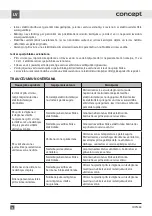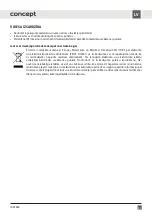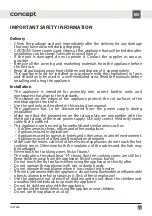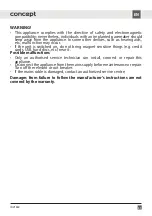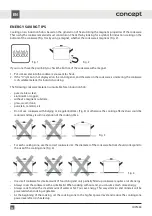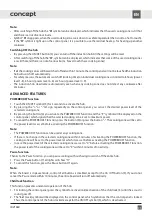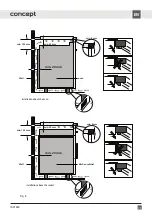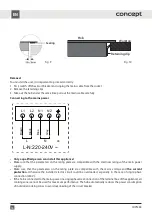
87
EN
IDV1460
EXAMPLES OF COOKING APPLICATION
What does cooking with an induction hob mean?
Cooking on an induction hob is based on a completely different principle than the usual ways of heating. The heat is
created directly in the cookware, whilst the cooking zone remains cold. This method of heating has many advantages
in comparison with others:
1. Time saving during cooking and baking
The cookware is heated directly, not the ceramic glass hob. There are no big heat losses so the effectiveness is
higher than other heating methods.
2. Energy saving
It is established that cooking on an induction hob consumes less electric power than other cooking methods.
3. Controlled supply of heat and more safety
The cooking zone transfers heat or interrupts its supply immediately after setting the power. As soon as you take
the cookware off the cooking zone, heat is interrupted without the need of switching off the cooking zone. After
cooking, only residual heat coming from the cookware remains on the cooking zone. Nevertheless, we do not
recommend leaving anything on the hob without attendance.
Note:
As to prevent unwanted heating up, e.g. in case of laying metal instruments on the hob, the system activates only if
the bottom of the utensil is of a specific dimension or bigger.
COOKING TIPS
The power level settings described below are just examples. The correct setting of power levels depends on several
factors, including the cookware used and the amount of food you cook. Experiment with the induction hob, and
gradually determine which power level settings are most suitable for you.
Some examples of power level settings:
a)
Level 1–2 can be used for:
• Keeping liquids simmering,
• Moderate and slow heating without the risk of burning,
• Melting butter or chocolate, etc.
• Defrosting,
• Boiling a small quantity of liquid.
b) Level 3–4 can be used for:
• Intensive boiling,
• Keeping a larger quantity of liquid boiling,
• Cooking rice,
• Stewing.
c)
Level 5–6 can be used for:
• Pancakes.
d) Level 7–8 can be used for:
• Cooking pasta.
e)
Level 9 can be used for:
• Cooking food requiring fast heating and high temperature (beef steaks, schnitzels, fried potatoes, etc.),
• Boiling water or soup,
• Heating food before switching over to a lower level.






